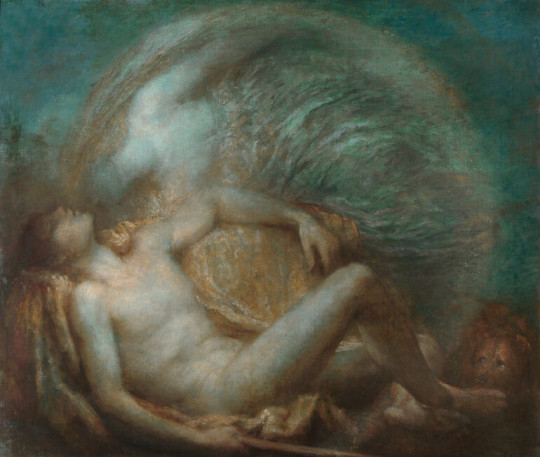#g.f. watts
Text

The Whisper of the Muse Portrait of G.F. Watts, 1865 © Julia Margaret Cameron
28 notes
·
View notes
Text
Fibre crafts and Art History time
So for those of you who don't know, I'm majoring in Art History at the moment and came across some paintings I'd like to share with you fibre friends.
First let's take a minute to set the scene of the Industrial Revolution (I'll keep this brief). The Ind. R is mainly associated with Britain, but was occurring across Britain during the late 18th century until early 19th century. This time saw a complete overhaul of hand-made goods in favour of machine made ones with new technology of the time. As machines grew and got more complex, more people were needed to work them. People all over Britain flocked to the cities for work, overcrowding them and creating awful conditions.
The use of these machines to make previously had crafted items such as the powerloom and the Crompton Mule was revolutionary, but had some awful affects on the working class.
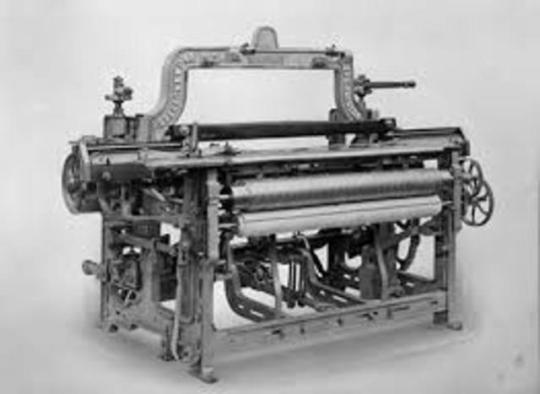
^here's a basic timeline that shows some of the other significant creations of the time.
The invention of these machines saw a lot of crafters and seamstresses losing work. These people were already living primarily on poverty, seamstresses often worked for 3 days straight with no breaks to make ends meet. Now the population were not oblivious to the plight of these overworked, exhausted and hungry (primarily) women. There were people who were anti Industrial Revolution for a myriad of reasons (destruction of 'the home', pollution, overpopulation of cities, long working hours, child labour and loss of localised industry to name a few).
The figure of the lone seamstress was a popular subject in art of the 18th century, but at this time took on a heavier feel to them. Still here? Lets look at 2 in particular.
The first is 'Song of the Shirt' by George Frederic Watts. However I've seen it called 'The Seamstress' as well. Painted in 1847, In this picture we see a tired seamstress with her head in her left hand clearly exhausted. Her sewing project lies in her lap with her right hand resting on top. She looks incredibly frail, almost like a withered porcelain.
G.F Watts was at times quite anti Ind.R and wanted to show the reality of the situation and the massive poverty it was bringing about.

Painting No.2 is quite similar but a little clearer.
This one is really striking. It's also called 'The Song of the Shirt' painted by Albert Daniel Rutherson in 1903. This lady, like the other looks a little like death warmed up to be honest. She sits on a rocking chair, a little hunched over with fabric in her hands and a sewing kit in front of her. Her attention is elsewhere. She looks a little like me when I have to knit sleeves. Even without being up close you can see bags under her eyes and sallow skin. She looks unwell. The composition is quite cool actually, the pale background kind of forces you to look at her. This may be one of my favourite paintings ever made.

So why have I brought this up. Why did I wake up at 6am with an urge to share these paintings. Well, I think as fibre artists we can sometimes forget our roots. Crafting these days can be so overpowered by 'buy this tool!' 'buy this yarn you will never use hurry its on sale!' (in my opinion at least). Personally, I knit and crochet to avoid fast fashion and to create garments I know I will wear and use. Fast fashion is everywhere nowadays. People are still working 16hr shifts for very little pay, at the same time, taking work away from artisanal crafters in favour of a cheap garment.
Not much has changed in the fibre community since the 18th century. Let's bring back the idea of criticising the industry. Let's show the world that these women did not over work themselves to death for nothing.
Thanks for reading I love you <3 (idk how to add emoji on laptop :,( .)
#fiber art#art history#industrial revolution#knitting#knit#sewing#seamstress#history#history posting#please feel free to add to this! i'd love to hear opinions!#knitblr#crochetblr#yarn#crochet#fibre arts
9 notes
·
View notes
Text
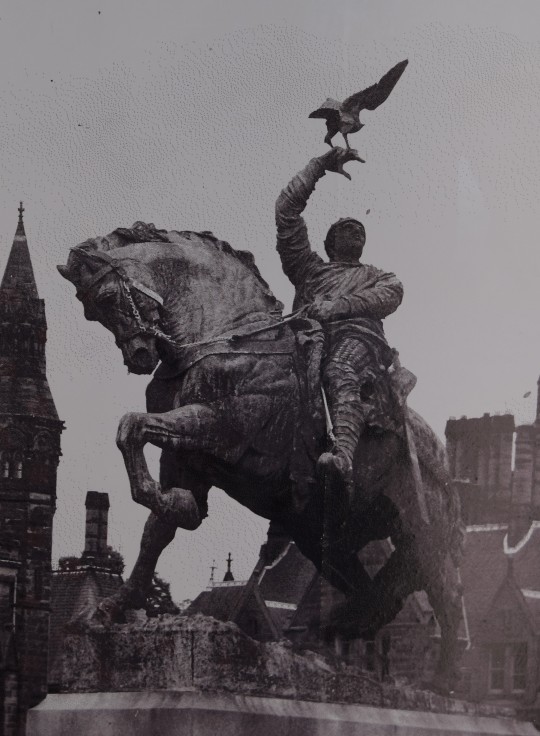
Statue of Hugh Lupus, Norman Earl of Chester, ancestor of the Duke of Westminster, by G.F. Watts, Eaton, Cheshire.
2 notes
·
View notes
Text
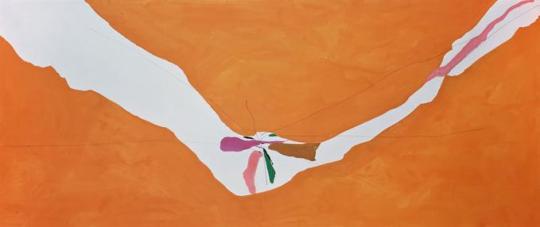

Helen Frankenthaler, Chairman of the Board, 1971
Julia Margaret Cameron, The Whisper of the Muse Portrait of G.F. Watts, 1865
0 notes
Photo

“Time and Death.” G.F Watts, artist. Magazine of art gift book. 1880.
Internet Archive
391 notes
·
View notes
Text
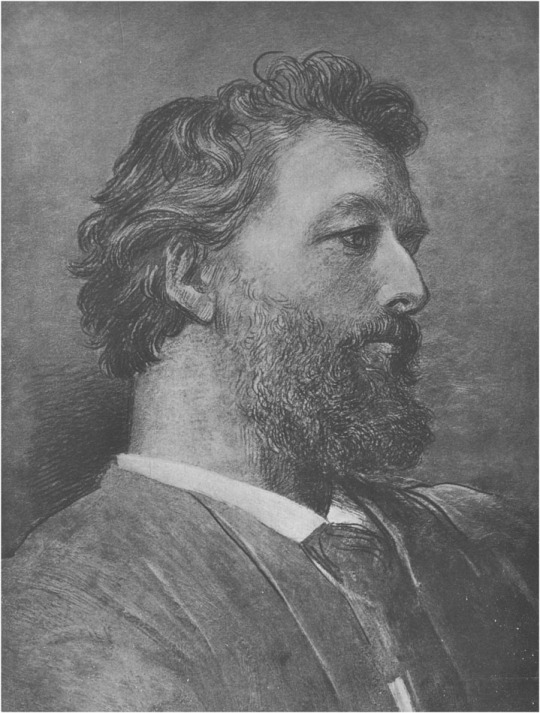
G.F. Watts
Frederich Leighton
11 notes
·
View notes
Quote
The older I get the more I agree that the only reality is the spiritual.
G.F. Watts
1 note
·
View note
Photo

The Sisters, depicting Kate and Ellen Terry, both of whom would go on to become celebrated actresses
George Frederic Watts, 1863-64
11 notes
·
View notes
Photo

Ariadne, G.F. Watts
14 notes
·
View notes
Photo


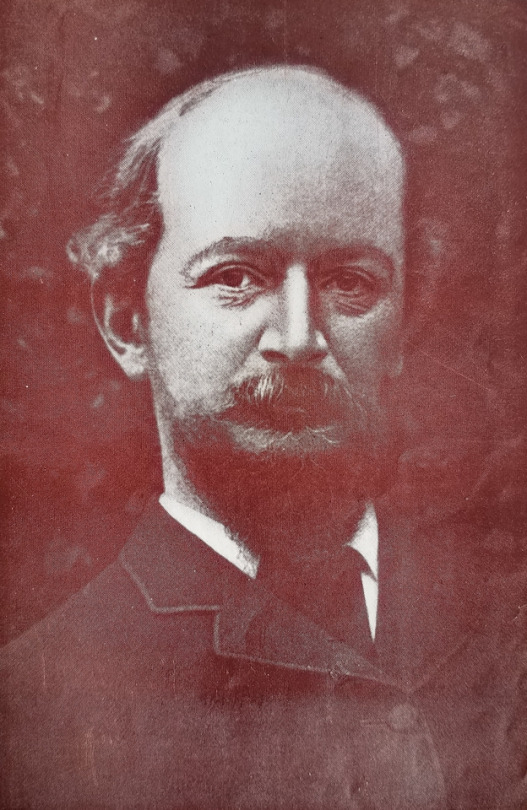
Algernon Charles Swinburne (5 April 1837 – 10 April 1909)
English poet, playwright, novelist, and critic. He wrote several novels and collections of poetry such as Poems and Ballads, and contributed to the famous Eleventh Edition of the Encyclopædia Britannica. (Wikipedia)
From our stacks: 1. Frontispiece “Algernon Charles Swinburne, from the painting by D. G. Rossetti, now in the possession of Lady Battersea.” from Algernon Charles Swinburne A Critical Study By Edward Thomas. New York: Mitchell Kennerley, 1912. 2. Frontispiece “Algernon Charles Swinburne From the painting by G. F. Watts in the National Portrait Gallery. Emery Walker Ltd.” from Swinburne An Estimate By John Drinkwater. London and Toronto: J. M. Dent & Sons, Ltd. New York: E. P. Dutton & Co., 1913. 3. Frontispiece “Algernon Charles Swinburne.” from Algernon Charles Swinburne A Study By Theodore Wratislaw. London: Greening & Co., Ltd., 1900.
#algernon charles swinburne#swinburne#portraits#book illustration#poet#poets#english literature#literature#book#books#rossetti#dante gabriel rossetti#g.f. watts#watts#english poet#english poets#poetry#english poetry#writer#writers#author#english lit#portrait#illustration#english author#authors#english authors#old book#old books#library book
27 notes
·
View notes
Photo

George Frederick Watts (British, 1817-1904), Loch Ness, c.1899. Oil on canvas, 76 × 63.5 cm.
225 notes
·
View notes
Photo
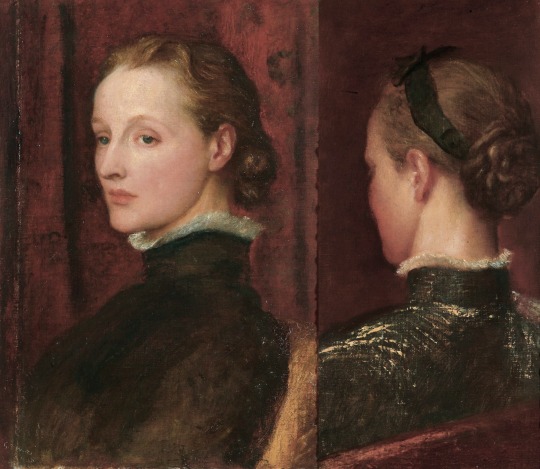
George Frederic Watts (1817-1904, British) ~ Mrs G.F. Watts, 1887
38 notes
·
View notes
Text

Blind hope, by G.F. Watts, Watts Gallery, Compton, Surrey
2 notes
·
View notes
Photo
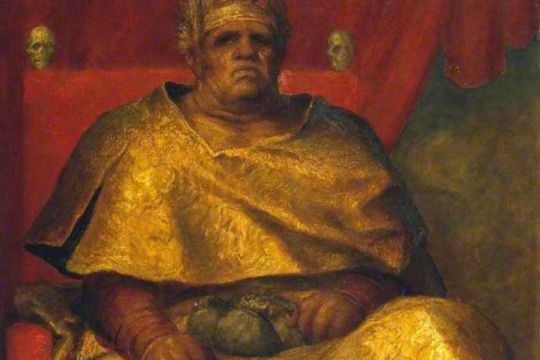
“When we start deceiving ourselves into thinking not that we want something… but that it is a moral imperative that we have it, that is when we join the fashionable mad men.”
– Joan Didion
[Mammon, George Frederick Watts]
• Generally, writers who hold readers’ imaginations across decades do so because there’s something unsolved in their project, something that doesn’t square and thus seems subject to the realm of magic. In Joan Didion’s case, a disconnect appears between the jobber-like shape of her writing life—a shape she often emphasizes in descriptions of her working habits—and the forms that emerged as the work accrued. For all her success, Didion was seventy before she finished a nonfiction book that was not drawn from newsstand-magazine assignments. She and Dunne started doing that work with an eye to covering the bills, and then a little more. (Their Post rates allowed them to rent a tumbledown Hollywood mansion, buy a banana-colored Corvette Stingray, raise a child, and dine well.) And yet the mosaic-like nonfiction books that Didion produced are the opposite of jobber books, or market-pitched books, or even useful, fibrous, admirably executed books. These are strange books, unusually shaped. They changed the way that journalistic storytelling and analysis were done. More: https://www.google.com/amp/s/www.newyorker.com/magazine/2021/02/01/what-we-get-wrong-about-joan-didion/amp
• Watts, in common with such social commentators as William Morris, Ruskin and Carlyle, began to question the benefits and purpose of modern industry and commerce and their dehumanising effects. In 1880 he wrote, 'Material prosperity has become our real god, but we are surprised to find that the worship of this visible deity does not make us happy.' (G.F. Watts, 'The Present Conditions of Art'). Four years later he decided to personify this so-called deity - the evil 'Mammon' - in paint. More: https://www.tate.org.uk/art/artworks/watts-mammon-n01630
#george frederic watts#symbolist#mammon#mad men joan didion#deception#writing#cultural commentary#criticism#evil#painting
4 notes
·
View notes
Text

Paint Table Workspace Thing - Studio of G.F. Watts, Limnerslease House
2 notes
·
View notes
